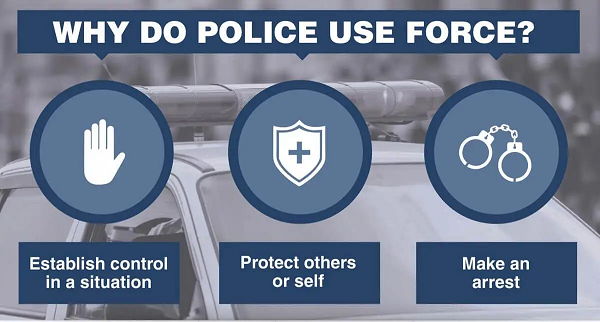
Police is responsible for maintaining law and order in a society. It is an effective, legitimate force through which a government can exercise its monopoly of control over violence. There are police organisations which exert their control with naked force all the time while others exercise their powers cautiously in acute situations or in limited scenarios when they fear public backlash and brutality.
Every police organisation resort to force when confronted with public fury. The friction between command decision for force restraint and political demand for exercising force excessively is a corollary of individual decision-making. It needs to be integrated into institutional police working. This however is coupled with some exceptions when police, with the assistance of other LEAs, take extreme measures in a social setting where chances of chaos due to inaction ignites more violence and lawlessness.
Generally, a police organisation operates in different ways. First, it is an interface between government and the public. The police set the trends and image building for public confidence. A high incidence of corruption often brings bad name to the department whereas an efficient or effective policing adds positivity to the perception about its working.
Second, it operates in an environment where other organisations and agencies are also present. They coordinate with each other in different matters and on varying occasions. At times, divergence of opinion creates a discord between police and other organisations. There are instances of direct or indirect interference in the police working by these organisations resulting into low performance and distortion of interface between government and public.
Lastly, police is not a counter-terrorism force and can only be used to hold a cleared area. The clearing process exclusively falls in the domain of military operations. There are specialised units embedded within police organisations but they cannot conduct independent operations without active support of the military in a disturbed area or region. There are however situations when police personnel become disgruntled and resort to protests over financial insecurity or personal unsafety in a conflict zone. Sometimes, police feel they have been pushed intentionally into a situation which should have been controlled by military. On certain occasions, intelligence operations of army are inconsistent with police actions resulting in killings and loss of lives of police personnel. If it persists for a long period of time, the law and order of the area, region or province is adversely affected. The militants can also take advantage of this incongruity, making room for themselves and creating greater disorganisation and confusion against the state.
Recently, in August 2024, Bangladesh police announced a strike after it attempted to suppress the public fury against government policies. The mob started attacking police wherever found possible. The police association of Bangladesh demanded that unless each and every member of its force was protected, they would not perform their duties in police stations and field. This shows there are limits to which police should pursue its legitimacy of exercising force while holding monopoly over violence. The police in Bangladesh used brutal force to quell the protesters resulting in the deaths of hundreds of civilians. The military remained in the support role and did not expose itself to the public protests. As a result, police bore the brunt of public reaction. The Bangladesh police later on submitted a public apology but it may not work in short span of time. The larger questions the police command needs to ask are: was there any friction between police command and political leadership over use of force? Were they not provided with advanced intelligence to foresee the situation?
The police officers must sense the tipping point of police actions beyond which such operations may become counterproductive. They must address the woes of their subordinates in conflict zones and safeguard their interests from external and internal interventions. An institutional control over use of police force remains a distant reality due to system inertia.


